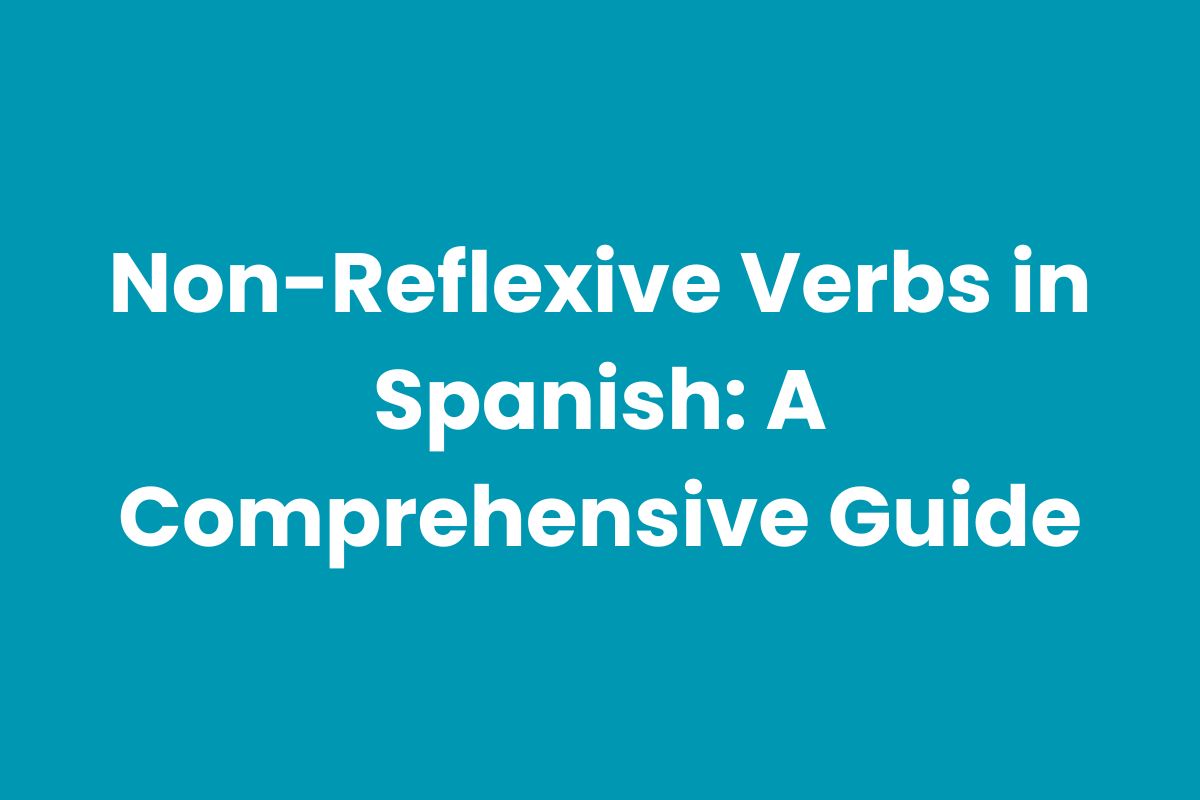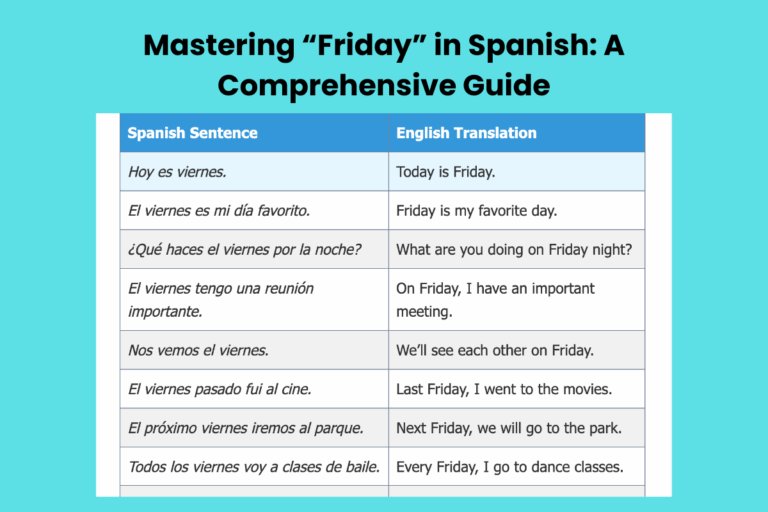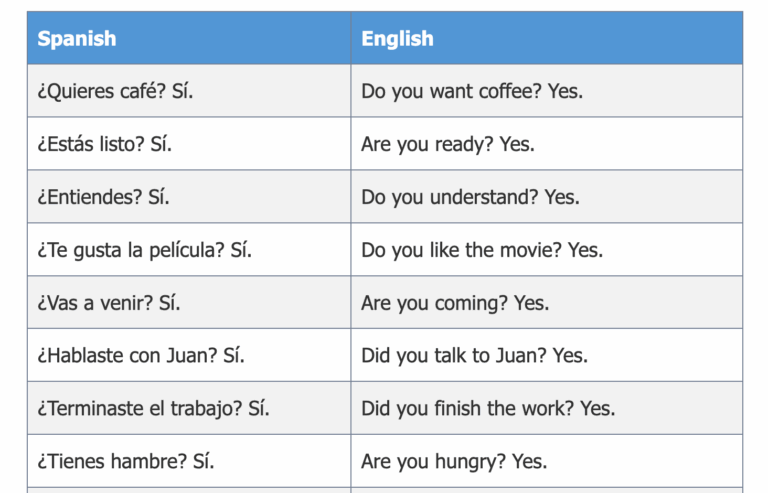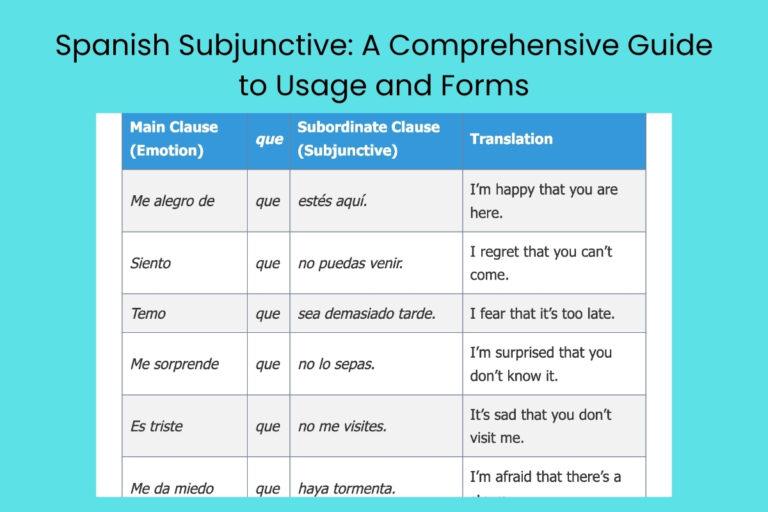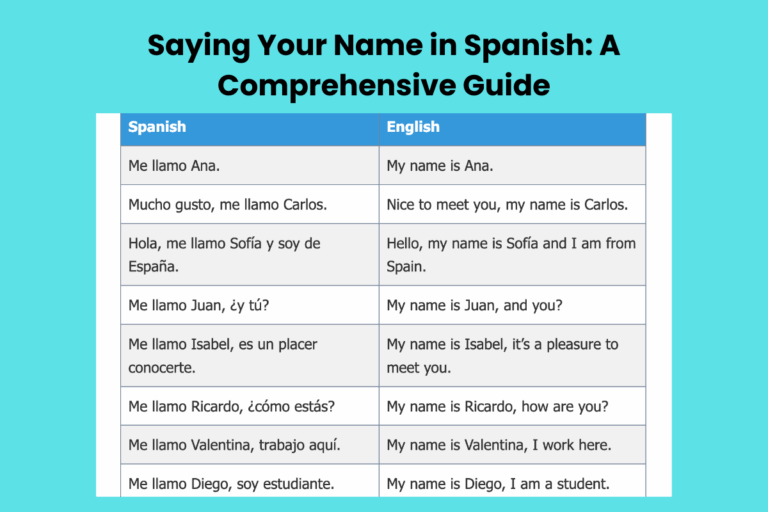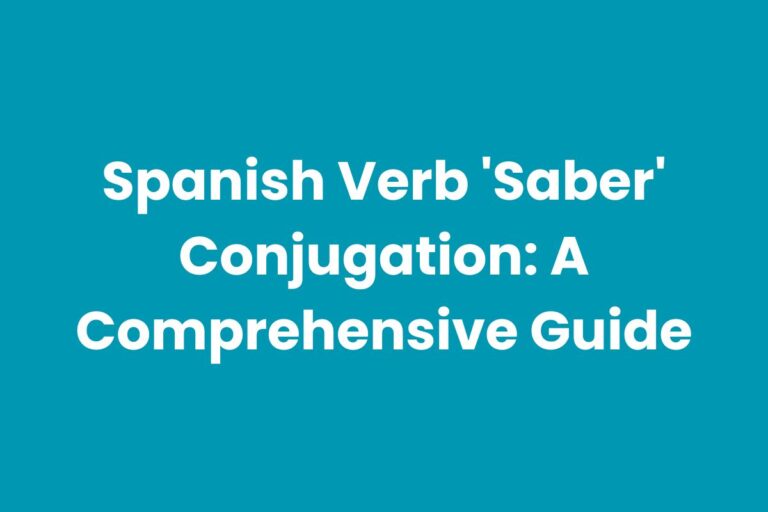Non-Reflexive Verbs in Spanish: A Comprehensive Guide
Understanding the difference between reflexive and non-reflexive verbs is crucial for mastering Spanish grammar. While reflexive verbs indicate that the subject performs an action on themselves, non-reflexive verbs involve actions directed towards someone or something else.
This guide will provide a thorough explanation of non-reflexive verbs, their structure, usage, and common pitfalls. This comprehensive resource is designed for Spanish learners of all levels, from beginners who are just starting to grasp the basics, to advanced students looking to refine their understanding and usage of Spanish verbs.
By mastering this topic, learners will improve their ability to form grammatically correct and meaningful sentences in Spanish.
Table of Contents
- Definition of Non-Reflexive Verbs
- Structural Breakdown
- Types and Categories of Non-Reflexive Verbs
- Examples of Non-Reflexive Verbs
- Usage Rules
- Common Mistakes
- Practice Exercises
- Advanced Topics
- FAQ
- Conclusion
Definition of Non-Reflexive Verbs
Non-reflexive verbs in Spanish are verbs whose action is performed by the subject upon someone or something else, not upon the subject itself. In other words, the subject and the object of the verb are different entities. These verbs don’t require a reflexive pronoun (me, te, se, nos, os, se) to indicate that the action is being done to oneself. Understanding this distinction is crucial because using a reflexive pronoun with a non-reflexive verb (or vice versa) will change the meaning of the sentence, often rendering it incorrect or nonsensical.
Non-reflexive verbs can be further classified based on their transitivity: transitive, intransitive, and ditransitive. A transitive verb requires a direct object to complete its meaning. An intransitive verb does not require a direct object, and the action is complete within the subject. A ditransitive verb takes both a direct and an indirect object.
The primary function of non-reflexive verbs is to describe actions that affect entities other than the subject performing the action. They are essential for expressing a wide range of activities, interactions, and states in Spanish.
They are used in various contexts, from everyday conversations to formal writing, and are fundamental to constructing grammatically sound and comprehensible sentences.
Structural Breakdown
The basic structure of a sentence with a non-reflexive verb in Spanish follows the Subject-Verb-Object (SVO) order, although the subject can sometimes be omitted if it is clear from the context or verb conjugation. The verb is conjugated according to the subject and the tense being used.
Subject + Verb (+ Object) (+ Indirect Object)
The key element that distinguishes a non-reflexive verb structure from a reflexive one is the absence of a reflexive pronoun. In a reflexive structure, the pronoun precedes the verb and agrees with the subject.
In a non-reflexive structure, this pronoun is not present. Instead, a direct object pronoun, an indirect object pronoun, or a noun phrase serves as the object of the verb.
For example:
- Yo como una manzana. (I eat an apple.) – Non-reflexive (transitive)
- Ella escribe una carta. (She writes a letter.) – Non-reflexive (transitive)
- Nosotros hablamos español. (We speak Spanish.) – Non-reflexive (transitive)
Compare these to reflexive examples:
- Yo me lavo. (I wash myself.) – Reflexive
- Ella se viste. (She gets dressed.) – Reflexive
- Nosotros nos despertamos. (We wake up.) – Reflexive
The conjugation of the verb follows standard Spanish verb conjugation rules, depending on whether it is an -ar, -er, or -ir verb, and the tense being used (present, past, future, etc.). Subject-verb agreement is crucial; the verb ending must match the subject pronoun or noun.
Types and Categories of Non-Reflexive Verbs
Non-reflexive verbs in Spanish can be categorized based on their transitivity, which determines whether they require an object to complete their meaning. The three main categories are:
Transitive Verbs
Transitive verbs require a direct object to receive the action of the verb. The direct object answers the question “what?” or “whom?” after the verb.
Without a direct object, the sentence is incomplete or grammatically incorrect. Many common verbs are transitive.
Examples:
- Comprar (to buy): Yo compro un libro. (I buy a book.)
- Escribir (to write): Ella escribe una carta. (She writes a letter.)
- Leer (to read): Nosotros leemos el periódico. (We read the newspaper.)
Intransitive Verbs
Intransitive verbs do not require a direct object. The action of the verb is complete within the subject.
While they can be followed by prepositional phrases or adverbs, they do not take a direct object that directly receives the action. Some verbs can be both transitive and intransitive depending on the context.
Examples:
- Nadar (to swim): Yo nado en la piscina. (I swim in the pool.)
- Dormir (to sleep): Ella duerme mucho. (She sleeps a lot.)
- Llegar (to arrive): Nosotros llegamos tarde. (We arrive late.)
Ditransitive Verbs
Ditransitive verbs take both a direct object and an indirect object. The direct object receives the action of the verb, while the indirect object indicates to whom or for whom the action is done.
The indirect object is often preceded by the preposition *a* (to) or *para* (for).
Examples:
- Dar (to give): Yo doy un regalo a mi madre. (I give a gift to my mother.)
- Decir (to say/tell): Ella dice la verdad a su hermana. (She tells the truth to her sister.)
- Mostrar (to show): Nosotros mostramos las fotos a nuestros amigos. (We show the photos to our friends.)
Examples of Non-Reflexive Verbs
This section provides extensive examples of non-reflexive verbs categorized by their transitivity. The examples are designed to illustrate how these verbs are used in different contexts and tenses.
Transitive Verbs
The following table provides examples of transitive verbs in sentences. Each sentence includes a subject, a transitive verb, and a direct object.
| Sentence | Translation |
|---|---|
| Yo escribo un libro. | I write a book. |
| Ella come una manzana. | She eats an apple. |
| Nosotros bebemos agua. | We drink water. |
| Tú compras un coche. | You buy a car. |
| Él vende su casa. | He sells his house. |
| Ustedes aprenden español. | You (plural, formal) learn Spanish. |
| Ellos miran la televisión. | They watch television. |
| Yo necesito ayuda. | I need help. |
| Ella quiere un perro. | She wants a dog. |
| Nosotros visitamos el museo. | We visit the museum. |
| Tú tienes un problema. | You have a problem. |
| Él prefiere el café. | He prefers coffee. |
| Ustedes entienden la lección. | You (plural, formal) understand the lesson. |
| Ellos escuchan la música. | They listen to music. |
| Yo leo el periódico. | I read the newspaper. |
| Ella cocina la cena. | She cooks dinner. |
| Nosotros limpiamos la casa. | We clean the house. |
| Tú estudias matemáticas. | You study mathematics. |
| Él habla inglés. | He speaks English. |
| Ustedes conducen el coche. | You (plural, formal) drive the car. |
| Ellos construyen un edificio. | They build a building. |
| Yo abro la puerta. | I open the door. |
| Ella cierra la ventana. | She closes the window. |
| Nosotros vemos la película. | We see the movie. |
| Tú recibes un correo electrónico. | You receive an email. |
| Él pierde las llaves. | He loses the keys. |
Intransitive Verbs
The following table provides examples of intransitive verbs in sentences. Each sentence includes a subject and an intransitive verb, and may include prepositional phrases or adverbs to provide additional context.
| Sentence | Translation |
|---|---|
| Yo camino en el parque. | I walk in the park. |
| Ella corre rápido. | She runs fast. |
| Nosotros vivimos aquí. | We live here. |
| Tú viajas mucho. | You travel a lot. |
| Él nace en mayo. | He is born in May. |
| Ustedes existen. | You (plural, formal) exist. |
| Ellos llegan tarde. | They arrive late. |
| Yo necesito dormir. | I need to sleep. |
| Ella sufre mucho. | She suffers a lot. |
| Nosotros reímos juntos. | We laugh together. |
| Tú lloras a menudo. | You cry often. |
| Él duda siempre. | He always doubts. |
| Ustedes insisten. | You (plural, formal) insist. |
| Ellos dependen de sus padres. | They depend on their parents. |
| Yo asisto a la clase. | I attend the class. |
| Ella trabaja duro. | She works hard. |
| Nosotros descansamos después. | We rest afterwards. |
| Tú participas activamente. | You participate actively. |
| Él permanece callado. | He remains silent. |
| Ustedes opinan diferente. | You (plural, formal) have a different opinion. |
| Ellos se jubilan pronto. | They retire soon. |
| Yo confío en ti. | I trust you. |
| Ella mejora cada día. | She improves every day. |
| Nosotros crecemos juntos. | We grow together. |
| Tú aprendes mucho. | You learn a lot. |
| Él responde rápidamente. | He responds quickly. |
Ditransitive Verbs
The following table provides examples of ditransitive verbs in sentences. Each sentence includes a subject, a ditransitive verb, a direct object, and an indirect object (often preceded by *a* or *para*).
| Sentence | Translation |
|---|---|
| Yo doy un regalo a mi madre. | I give a gift to my mother. |
| Ella dice la verdad a su hermana. | She tells the truth to her sister. |
| Nosotros mostramos las fotos a nuestros amigos. | We show the photos to our friends. |
| Tú envías una carta a tu abuela. | You send a letter to your grandmother. |
| Él presta dinero a Juan. | He lends money to Juan. |
| Ustedes ofrecen ayuda a los necesitados. | You (plural, formal) offer help to those in need. |
| Ellos venden flores a los turistas. | They sell flowers to the tourists. |
| Yo cocino la cena para mi familia. | I cook dinner for my family. |
| Ella escribe una nota a su profesor. | She writes a note to her teacher. |
| Nosotros compramos dulces para los niños. | We buy sweets for the children. |
| Tú traes café a tu jefe. | You bring coffee to your boss. |
| Él cuenta un cuento a sus hijos. | He tells a story to his children. |
| Ustedes leen un libro a los estudiantes. | You (plural, formal) read a book to the students. |
| Ellos explican la lección a los alumnos. | They explain the lesson to the students. |
| Yo mando un mensaje a mi amigo. | I send a message to my friend. |
| Ella regala flores a su novio. | She gives flowers to her boyfriend. |
| Nosotros servimos la comida a los clientes. | We serve the food to the customers. |
| Tú pides un favor a tu vecino. | You ask a favor of your neighbor. |
| Él roba el banco al pueblo. | He robs the bank from the town. |
| Ustedes permiten la salida a los jovenes. | You (plural, formal) allows the youth to leave. |
| Ellos niegan la entrada a los perros. | They deny the dogs entrance. |
| Yo presto mis apuntes a mi compañero. | I lend my notes to my classmate. |
| Ella quita la silla a su abuela. | She takes the chair from her grandmother. |
Usage Rules
The key rule for using non-reflexive verbs is to ensure that the subject and the object of the verb are different. The action is directed from the subject towards another entity, not back to the subject itself.
This is the fundamental difference between reflexive and non-reflexive verb usage.
When using transitive non-reflexive verbs, always include a direct object. Omitting the direct object will render the sentence incomplete and often grammatically incorrect.
The direct object can be a noun, a pronoun, or a clause.
With ditransitive verbs, both a direct and an indirect object are required. The indirect object is typically preceded by the preposition *a* or *para*, indicating the recipient or beneficiary of the action.
Intransitive verbs do not take a direct object. While they can be followed by prepositional phrases or adverbs, these phrases do not function as direct objects.
The sentence is complete without a direct receiver of the action.
Exceptions and Special Cases:
Some verbs can be used both reflexively and non-reflexively, but their meaning changes depending on whether a reflexive pronoun is used. For example:
- Lavar (to wash): Yo lavo el coche. (I wash the car.) – Non-reflexive
- Lavarse (to wash oneself): Yo me lavo. (I wash myself.) – Reflexive
The verb *ir* (to go) is generally intransitive, but it can be used with a direct object in certain idiomatic expressions. However, this is less common.
The placement of object pronouns (direct and indirect) follows specific rules. Generally, they precede the conjugated verb.
When used with infinitives or gerunds, they can be attached to the end of the verb form.
Common Mistakes
One of the most common mistakes is confusing reflexive and non-reflexive verbs. This often results in grammatically incorrect sentences and altered meanings.
It is crucial to understand whether the action is being performed on the subject itself or on another entity.
Mistake 1: Using a reflexive pronoun with a non-reflexive verb.
| Incorrect | Correct | Explanation |
|---|---|---|
| Yo me como una manzana. | Yo como una manzana. | Using “me” with “comer” incorrectly implies that the speaker is eating themselves. The correct sentence simply states, “I eat an apple.” |
Mistake 2: Omitting the direct object with a transitive verb.
| Incorrect | Correct | Explanation |
|---|---|---|
| Ella escribe. | Ella escribe una carta. | “Escribir” is a transitive verb and requires a direct object. The incorrect sentence is incomplete. The correct sentence states, “She writes a letter.” |
Mistake 3: Incorrect placement of object pronouns.
| Incorrect | Correct | Explanation |
|---|---|---|
| Yo como lo. | Yo lo como. | Object pronouns generally precede the conjugated verb. In this case, “lo” (it) should come before “como” (I eat). The correct sentence states, “I eat it.” |
Mistake 4: Using the wrong preposition with an intransitive verb.
| Incorrect | Correct | Explanation |
|---|---|---|
| Yo dependo de a ti. | Yo dependo de ti. | The preposition “de” is correctly used with depender, but the unnecessary “a” is added. The correct sentence states, “I depend on you.” |
Mistake 5: Not distinguishing between similar reflexive and non-reflexive verbs.
| Incorrect | Correct | Explanation |
|---|---|---|
| Yo levanto la mañana. | Yo me levanto por la mañana. | “Levantar” means to lift something, but “levantarse” means to get oneself up. The correct sentence states, “I get up in the morning.” |
Practice Exercises
These exercises will help you practice identifying and using non-reflexive verbs correctly.
Exercise 1: Identify whether the verb in each sentence is reflexive or non-reflexive.
| Sentence | Reflexive or Non-Reflexive | Answer |
|---|---|---|
| Yo lavo los platos. | Non-Reflexive | |
| Ella se peina el pelo. | Reflexive | |
| Nosotros comemos la pizza. | Non-Reflexive | |
| Tú te vistes rápidamente. | Reflexive | |
| Él lee un libro. | Non-Reflexive | |
| Ustedes se acuestan temprano. | Reflexive | |
| Ellos cortan el pasto. | Non-Reflexive | |
| Yo recuerdo aquel dia. | Non-Reflexive | |
| Ella se maquilla antes de salir. | Reflexive | |
| Nosotros visitamos a nuestros tios. | Non-Reflexive |
Exercise 2: Fill in the blank with the correct form of the verb in parentheses.
| Sentence | Verb (Infinitive) | Answer |
|---|---|---|
| Yo ________ (escribir) una carta. | Escribir | escribo |
| Ella ________ (comer) la sopa. | Comer | come |
| Nosotros ________ (vivir) en España. | Vivir | vivimos |
| Tú ________ (estudiar) mucho. | Estudiar | estudias |
| Él ________ (trabajar) en la oficina. | Trabajar | trabaja |
| Ustedes ________ (aprender) español. | Aprender | aprenden |
| Ellos ________ (hablar) por telefono. | Hablar | hablan |
| Yo ________ (necesitar) ayuda. | Necesitar | necesito |
| Ella ________ (querer) un nuevo coche. | Querer | quiere |
| Nosotros ________ (entender) la lección. | Entender | entendemos |
Exercise 3: Translate the following sentences into Spanish using non-reflexive verbs.
| English Sentence | Spanish Translation |
|---|---|
| I read the book. | Yo leo el libro. |
| She drinks water. | Ella bebe agua. |
| We visit the museum. | Nosotros visitamos el museo. |
| You (singular, informal) buy a car. | Tú compras un coche. |
| He sells his house. | Él vende su casa. |
| They listen to music. | Ellos escuchan música. |
| I see the cat. | Yo veo el gato. |
| She opens the door. | Ella abre la puerta. |
| We close the window. | Nosotros cerramos la ventana. |
| You (plural, formal) receive an email. | Ustedes reciben un correo electrónico. |
Advanced Topics
For advanced learners, understanding the nuances of verbs that can be both reflexive and non-reflexive is crucial. The subtle shifts in meaning can significantly impact the message conveyed.
Pay close attention to the context and the presence or absence of the reflexive pronoun.
Explore the use of object pronouns (direct and indirect) in combination with non-reflexive verbs. Mastering pronoun placement and agreement is essential for fluency and accuracy.
Investigate the use of non-reflexive verbs in complex sentence structures, such as those involving relative clauses or subjunctive mood. Understanding how these verbs function in more elaborate constructions will enhance your overall comprehension and expression.
Analyze literary texts and authentic Spanish conversations to observe how native speakers use non-reflexive verbs in various contexts. This will provide valuable insights into the practical application of these grammatical concepts.
FAQ
Q1: What is the difference between a reflexive and a non-reflexive verb?
A1: A reflexive verb indicates that the subject performs an action on themselves (e.g., lavarse – to wash oneself), while a non-reflexive verb indicates that the subject performs an action on someone or something else (e.g., lavar el coche – to wash the car).
Q2: How can I tell if a verb is reflexive or non-reflexive?
A2: Reflexive verbs are typically identified by the presence of a reflexive pronoun (me, te, se, nos, os, se) that agrees with the subject. Non-reflexive verbs do not have these pronouns.
Q3: Can a verb be both reflexive and non-reflexive?
A3: Yes, many verbs can be used both ways, but their meaning changes depending on whether a reflexive pronoun is used. For example, levantar (to lift) vs. levantarse (to get up).
Q4: What is a transitive verb?
A4: A transitive verb requires a direct object to complete its meaning. The direct object receives the action of the verb.
Q5: What is an intransitive verb?
A5: An intransitive verb does not require a direct object. The action of the verb is complete within the subject.
Q6: What is a ditransitive verb?
A6: A ditransitive verb takes both a direct object and an indirect object. The direct object receives the action, while the indirect object indicates to whom or for whom the action is done.
Q7: Where do object pronouns go in sentences with non-reflexive verbs?
A7: Object pronouns (direct and indirect) generally precede the conjugated verb. With infinitives or gerunds, they can be attached to the end of the verb form.
Q8: Why is it important to distinguish between reflexive and non-reflexive verbs?
A8: Understanding the difference is crucial for constructing grammatically correct and meaningful sentences. Using the wrong type of verb can change the meaning of the sentence or render it nonsensical.
Q9: How do I know which preposition to use with an intransitive verb?
A9: The preposition used with an intransitive verb often depends on the specific verb and the intended meaning. It’s best to learn these combinations through exposure and practice.
Q10: Are there any resources for further practice with non-reflexive verbs?
A10: Yes, many online resources, textbooks, and language learning apps offer exercises and explanations on Spanish grammar, including non-reflexive verbs. Look for resources that provide clear examples and opportunities for practice.
Conclusion
Mastering non-reflexive verbs is a fundamental step towards fluency in Spanish. Understanding their structure, types, and usage rules is essential for constructing grammatically correct and meaningful sentences.
By recognizing the difference between transitive, intransitive, and ditransitive verbs, learners can express a wide range of actions and interactions effectively.
Remember to pay close attention to the context and the presence or absence of reflexive pronouns. Practice identifying and using non-reflexive verbs in various contexts, and don’t be afraid to make mistakes – they are a valuable part of the learning process.
By consistently applying the concepts outlined in this guide, you will significantly improve your Spanish grammar skills and your ability to communicate confidently and accurately.

